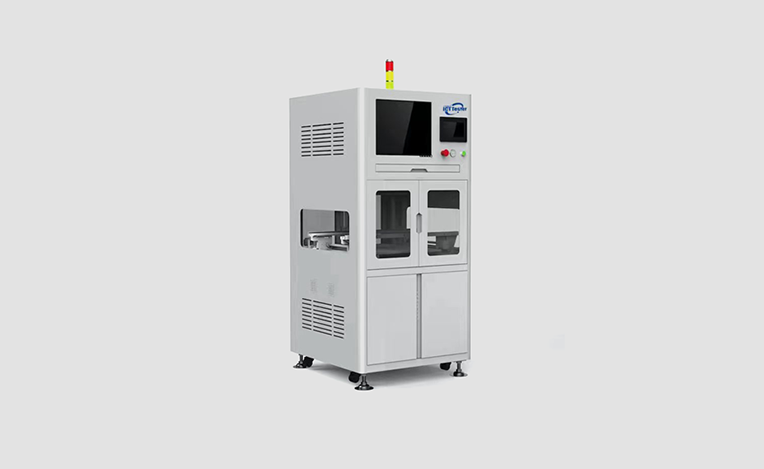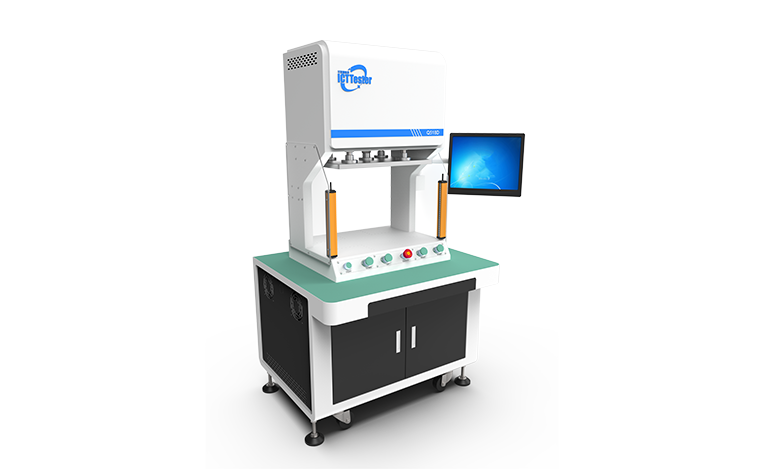



The in-circuit tester, or ICT, is an essential testing device for the production of PCBA (Printed Circuit Board Assembly) in modern electronic enterprises. There are two types of ICT testers: online ICT testers and offline ICT testers.
The ICT tester is mainly divided into the system part and the power control part. The system part consists of the testing system and the ON-LINE HELP window system, while the power control part includes BOARD VIEW, DATA EDIT, anti-static device, automatic power switch, self-detection function, test step isolation, automatic discharge, testing mode for resistance below 1 ohm, remote control function, and various IC test detection.

1. ICT has a wide range of uses, high measurement accuracy, and clear indications of detected problems. It is a standard testing method and can be easily handled even by workers with average electronic technology skills. ICT can greatly improve production efficiency and reduce production costs.
2. ICT testing primarily involves testing probe contact on the PCB layout to detect open or short circuits, soldering of all components, and can include open circuit testing, short circuit testing, resistance testing, capacitance testing, diode testing, transistor testing, and various other common and special component testing. It accurately identifies which component is faulty or where the open or short circuit is located through printer or screen display.
3. Function testing of TTL, OP RELAY, and IC program burning.
When selecting ICT testing equipment, consider the following factors:
1. Equipment quality: Quality should be the primary consideration when purchasing ICT testing equipment as it directly impacts efficiency.
2. User experience: Besides quality, ease of use and the ability to quickly and easily troubleshoot problems are essential.
3. Cost: Consider the cost of the ICT equipment based on the company's operational situation and the need to reduce costs while increasing efficiency.
4. After-sales support: After-sales support is crucial for addressing any issues that may arise, so ensure the manufacturer offers adequate support.
There are many excellent ICT tester brands globally, such as Agilent Technologies (USA), Teradyne (USA), Check Sum (USA), AEROFLEX (USA), WINCHY (China), Hioki (Japan), Takaya (Japan), Tescon (Japan), and others.QBSICT, a Chinese company, is known for its ICT testing equipment's advantages.
QBSICT offers the following advantages:
1. User-friendly interface, easy operation, and quick learning curve.
2. Auto-generating testing programs for open/short circuits and IC protection diodes.
3. Automatic isolation point selection.
4. Multiple board program auto-generation.
5. System self-diagnosis.
6. Complete statistical reporting and data storage.
7. BoardView function to display faulty component and pin locations for easy troubleshooting.
8. Special four-wire test mode for testing small resistance, eliminating unstable probe-circuit board contact resistance.
9. Application of IC Clamping Diode characteristics for IC pin fault and soldering checks, among others.
10. Compact and lightweight, suitable for high-tech product requirements.
11. Application of induction technology for detecting SMD IC soldering, open circuits, and other issues.
12. Can detect and assemble components such as resistors, capacitors, inductors, transistors, diodes, voltage regulators, optocouplers, and relays on the loaded PC board within a few seconds, and verify that they operate within our specified parameters.
13. Can identify process defects such as missing parts, bending, short-circuits, solder bridges, misorientation, wrong components, open circuits, and soldering defects, and provide feedback for process improvement.
14. Can print out test results including fault locations, component standard values, and test values for reference by maintenance personnel.
15. Can effectively reduce the reliance on product technical expertise and still have the ability to carry out repairs without needing a deep understanding of the product's circuitry.
16. Supports various OEM customizations for system and functionality, can be tailored for specific user scenarios, and provides efficient after-sales service and quality assurance commitment.

The price of ICT testing equipment typically ranges from tens of thousands to over a hundred thousand US dollars, depending on the type and functionality. The recommended price range is between $50,000 and $120,000 for ICT testing equipment that fulfills requirements and offers value for money.
Q: What components can ICT tester basic functions measure?
A: Open/short circuits, resistance, capacitance, inductance, diodes, IC protection diode testing, among others.
Q: Why use ICT tester?
A: ICT is used to quickly detect and accurately locate and classify faulty components or assembly defects, addressing over 90% of assembly defects in circuit board assembly.
Q: Can ICT tester be considered as a multimeter?
A: ICT can be considered as an automated advanced multimeter, with the added feature of circuit isolation (Guarding) for accurate component measurements within the circuit.
Q: What is the relationship between ICT tester and AOI tester?
A: ICT primarily uses electrical measurement methods, while AOI employs optical image processing technology. They complement each other and are typically used consecutively in the production process.
when purchasing ICT tester equipment, consider the quality, user experience, cost, and after-sales support, and chose from reputable brands such as QBSICT, and identify the appropriate price range based on the company's needs and budget. Always communicate with manufacturers to ensure custom requirements are met.